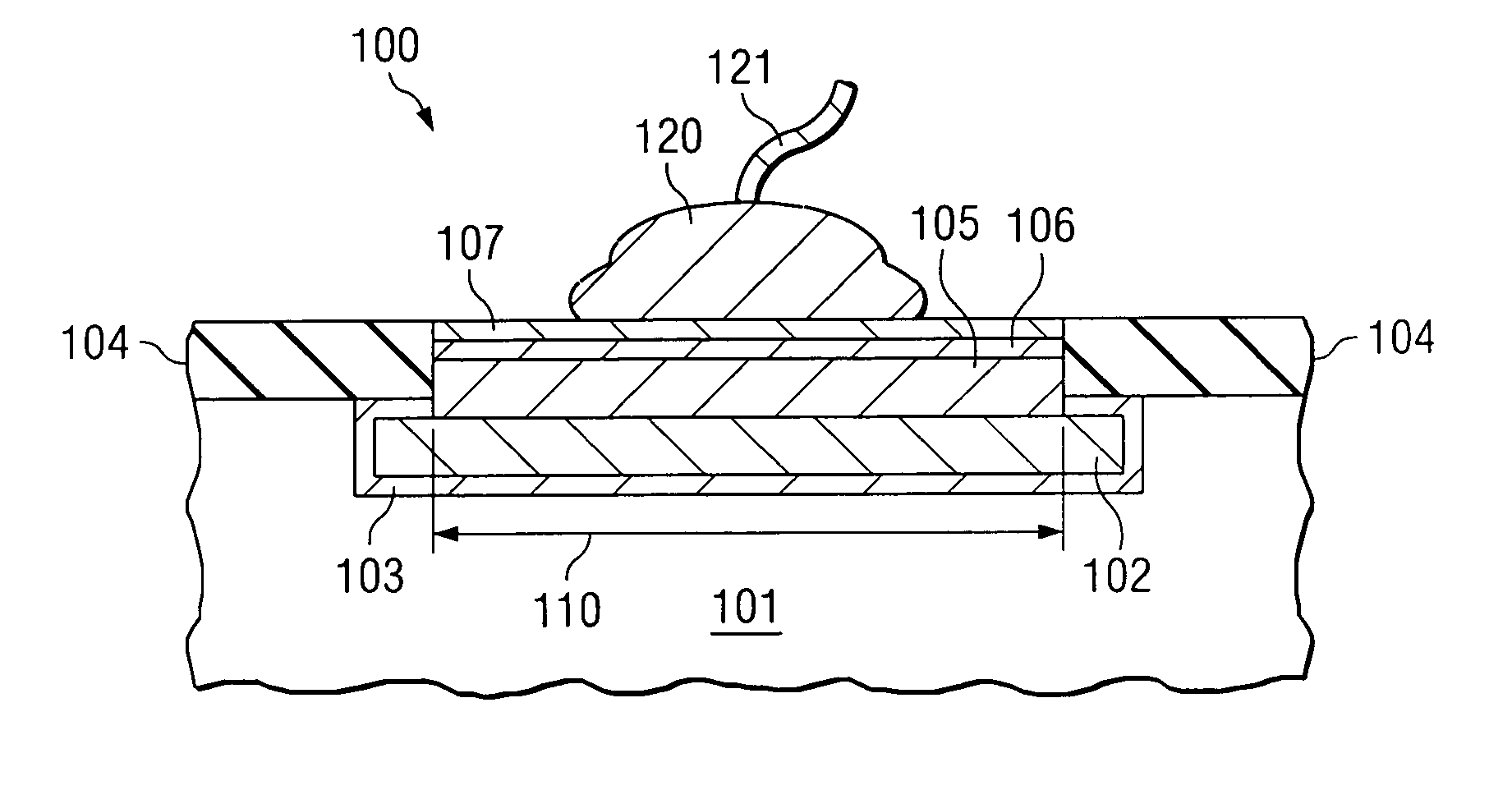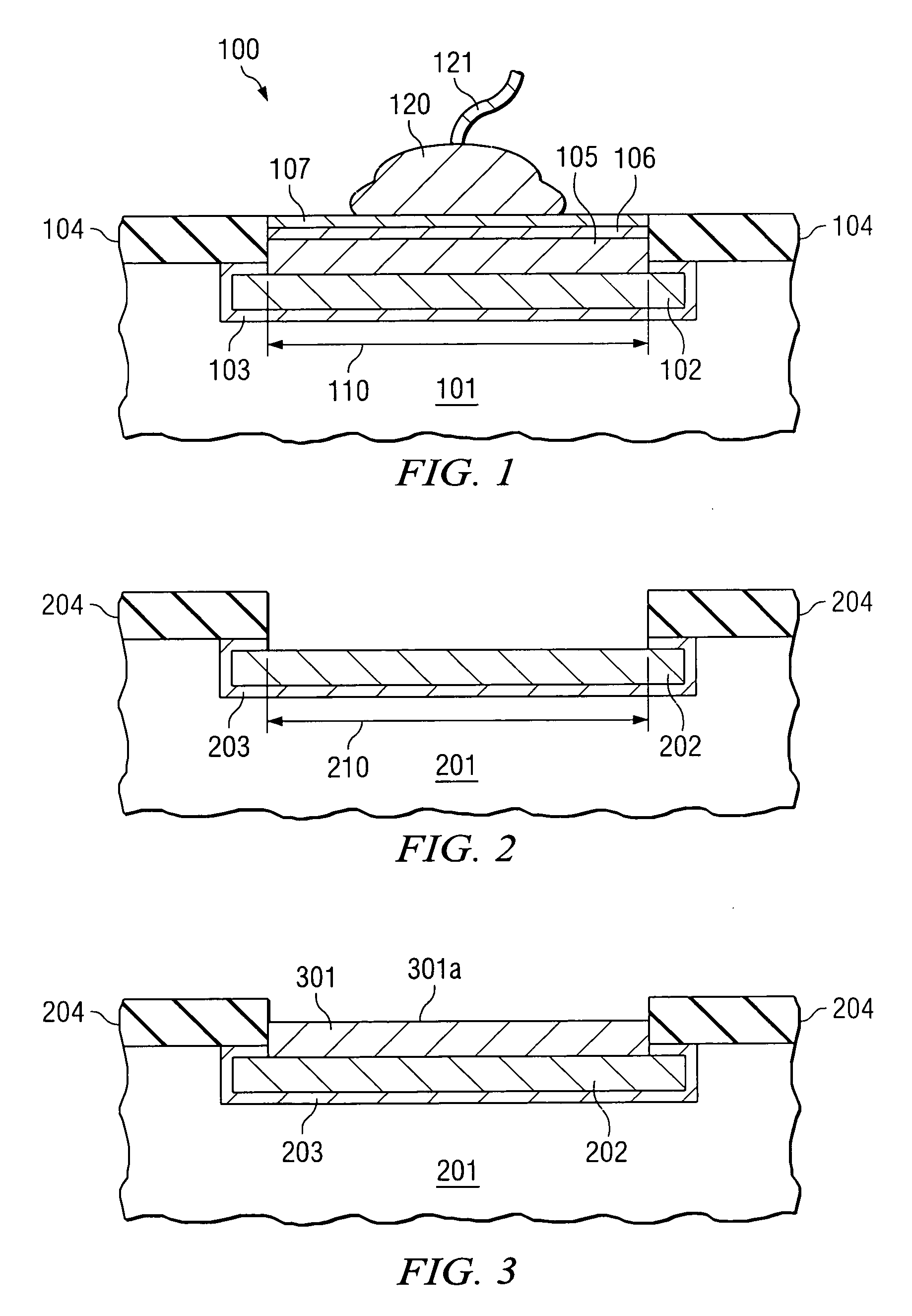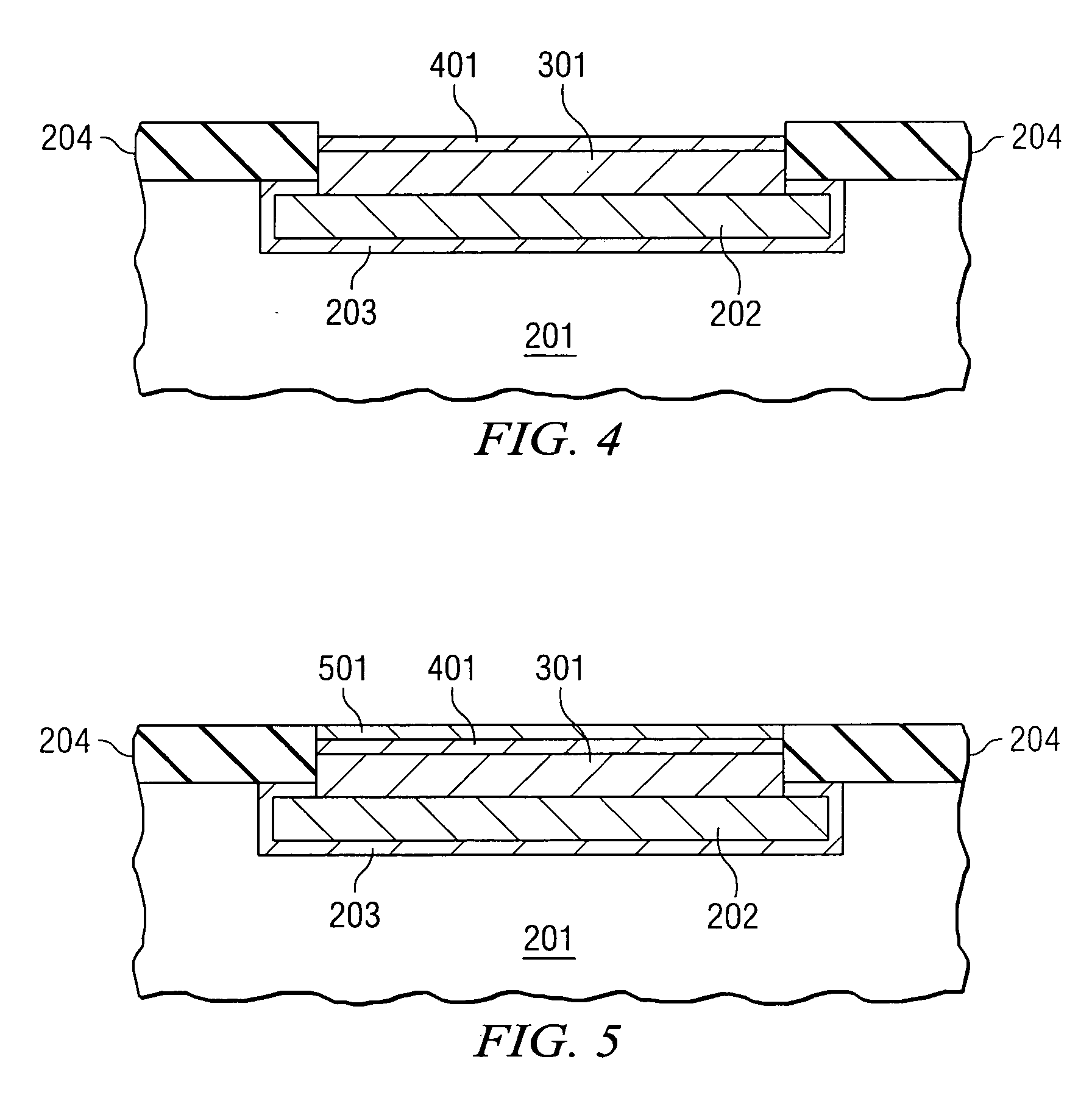Copper-metallized integrated circuits having electroless thick copper bond pads
a technology of copper-metallized integrated circuits and contact pads, which is applied in the direction of layered products, transportation and packaging, chemical instruments and processes, etc., can solve the problems of bare copper bond pads being susceptible to corrosion, copper oxide films overlying metallic copper cannot be easily broken by a combination, and severe inhibiting the reliable attachment of bonding wires
- Summary
- Abstract
- Description
- Claims
- Application Information
AI Technical Summary
Benefits of technology
Problems solved by technology
Method used
Image
Examples
Embodiment Construction
[0017] The schematic cross section of FIG. 1 illustrates a bond pad generally designated 100 of a semiconductor device, completed according to the process flow of the invention and with a wire bond attached. A semiconductor chip 101 has interconnecting traces 102 made of a first copper layer. For an integrated circuit, first copper layer 102 has preferably a thickness (first thickness) in the range from about 0.2 to 1.0 μm. In order to prevent outdiffusion of the copper, trace 102 is preferably surrounded by a barrier metal layer 103. Barrier metal layer 103 is typically tantalum nitride in the thickness range from about 20 to 50 nm. Semiconductor chip 101 is protected by an insulating overcoat 104, typically made of silicon nitride, silicon oxynitride, silicon carbide, polyimide, or stacks of these or related insulators; a preferred thickness range is from about 0.5 to 1.0 μm.
[0018] As FIG. 1 shows, trace 102 of the first copper layer is selectively exposed by the window 110 in th...
PUM
| Property | Measurement | Unit |
|---|---|---|
| thickness | aaaaa | aaaaa |
| thickness | aaaaa | aaaaa |
| thickness | aaaaa | aaaaa |
Abstract
Description
Claims
Application Information
 Login to View More
Login to View More - R&D
- Intellectual Property
- Life Sciences
- Materials
- Tech Scout
- Unparalleled Data Quality
- Higher Quality Content
- 60% Fewer Hallucinations
Browse by: Latest US Patents, China's latest patents, Technical Efficacy Thesaurus, Application Domain, Technology Topic, Popular Technical Reports.
© 2025 PatSnap. All rights reserved.Legal|Privacy policy|Modern Slavery Act Transparency Statement|Sitemap|About US| Contact US: help@patsnap.com



